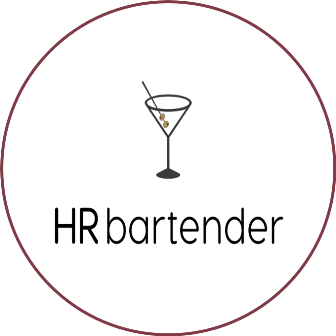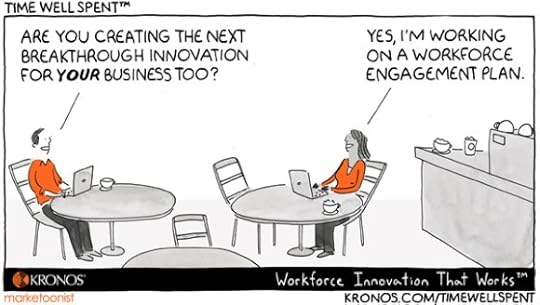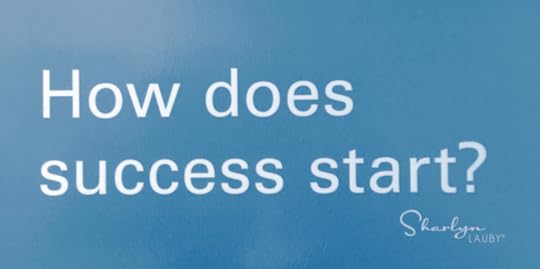Sharlyn J. Lauby's Blog, page 131
August 31, 2017
Bookmark This! #HurricaneHarvey Resources for HR and Business
Hurricane Harvey and its aftermath continues to devastate Texas and Louisiana. As an HR pro who has been through hurricanes, I empathize with the people in the area. You’re trying to take care of your family. And you’re trying to take care of your “work” family. So, I wanted to put together a list of resources that might help. (Oh, and on an unrelated note, I have some news about HR Bartender that I’d like to share.)
The Society for Human Resources Management (SHRM) offers several weather disaster resources including information about how to communicate with employees and overtime pay, leaves of absence and timekeeping.
Jonathan Segal, partner at Duane Morris LLP, has helped us maneuver through some tricky reader questions. He wrote an article for “Houston Employers: Wage & Hour Guidance and Hurricane Harvey”.
The lawfirm of Fisher Phillips posted an article on their Wage and Hour Laws Blog about “FLSA Questions After Hurricane Harvey”. The Fair Labor Standards Act (FLSA) is a complex law. Hurricane Harvey will raise questions you’ve probably never thought of before.
But legal issues aren’t the only issue that HR will face. Employees face some very real challenges in the months to come. They will need help and want to help others.
Suzanne Lucas (aka Evil HR Lady) shares “9 Ways Your Business Can Help Hurricane Harvey’s Houston Victims”. It’s a good reminder that some forms of assistance are better than others.
In “Human Resources, Houston, and Harvey”, Laurie Ruettimann challenges business leaders to get creative with their business strategies. It’s a win for everyone.
And it’s sad to say, but times like this also bring out scams. I’m not here to tell anyone when or how much to give. If you can help, I hope you will. Just make sure the organization is legit.
South Floridians still reflect each year on the anniversary Hurricane Andrew, which happened in August of 1992. In fact, they’ve dropped the hurricane part and it’s just Andrew. Everyone knows. It doesn’t need to be spoken. Harvey will be remembered for a very long time. I know anything we can do to help will be very appreciated.
Oh, and P.S. I mentioned at the beginning of the post that I had some news about HR Bartender too. It’s time for a little update. Actually, it’s long overdue. But we’ve been working on a new design and look forward to sharing it with you next week. Just a heads up, the site might be a little wonky over the weekend as we launch the new look.
The post Bookmark This! #HurricaneHarvey Resources for HR and Business appeared first on hr bartender.






August 29, 2017
The 4 Constituents in Today’s Blended Workforce
We’ve talked about how today’s workforces need three key constituents: regular full-time workers, regular part-time workers, and contingent workers (i.e. freelancers, contractors, consultants, etc.) Each group involves a unique recruiting as well as an engagement strategy. Which we’ve also talked about before.
BUY is where the company hires talent from the outside. The advantage to this approach is that the organization gets fresh perspectives and new ideas. The disadvantage is that it can be expensive to attract talent from the outside.
BUILD is when the company develops talent from within. The upside is that this strategy is great for employee morale. The downside is that developing talent takes time. It also means having the training resources available.
BORROW is using freelancers or consultants when the need arises. Not every job is a full-time job, so the pro to this approach is getting the necessary talent at the moment it’s needed. The con is keeping freelancers engaged so that, when you need them, they’re available for you and ready to work.
But after hearing Jeanne Meister, founding partner of Future Workplace, speak at this year’s WorkHuman Conference, I realized there might be a fourth constituent – bots. Yes, bots. The groups we’ve talked about so far are all human beings. Technology advances, like artificial intelligence and bots, are allowing organizations to do things never before possible.
Maybe what organizations need to consider in their staffing strategies is not only what work should be assigned to full-time, part-time, or freelancers, but what work can be assigned to bots. Now before people start thinking that this will eliminate the human workforce, it’s important to realize that while bots are an important technological advancement, they haven’t been developed to the point where they can replace all human workers. If bots were considered the fourth key constituent in today’s blended workforce, the description would look something like this:
BOTS would be used when the organization has a defined, predictable, repetitive task. The plus would be that the organization would gain consistency and scalability in managing these kinds of tasks. The minus would be return-on-investment as well as the perceived loss of human interaction.
I know bots are getting mixed reviews right now, but I can see this fourth constituent being important in future staffing discussions. Organizations need to ask: Is this a full-time, part-time, freelance, or bot job? That will determine how an organization goes about finding the worker. Do they buy it, build it in-house, have someone occasionally work on it, or automate it?
The workforce is changing. Even if your organization isn’t looking at bots right now, it’s possible they will be in the future. HR and talent acquisition professionals need to be prepared for a strategic response.
Image captured by Sharlyn Lauby after speaking at the 2016 MBTI Users Conference in San Francisco, CA
The post The 4 Constituents in Today’s Blended Workforce appeared first on hr bartender.






August 27, 2017
How Organizations and Employees Can Start Focusing on Wellness
(Editor’s Note: Today’s post is brought to you by Cubii, the world’s first smart under-desk elliptical machine. After their successful Kickstarter launch, Cubii is now available on QVC and at BestBuy, in addition to their website. To learn more about Cubii, visit mycubii.com .)
An increasing number of companies are offering employee wellness programs. According to the Society for Human Resource Management (SHRM), 70 percent of U.S. employers offer wellness benefits (up from 58 percent in 2008). That’s because organizations understand that healthy employees perform better. In addition, the company realizes a return on their investment. A RAND Corporation study found that every $1 invested in wellness yields a return on investment (ROI) of $1.50.
But the reality is wellness programs can be hard for both the company and the individual. For organizations, it’s hard to find wellness resources that are budget friendly, ergonomically well made, and usable by a diverse group of people. For employees, it’s hard to incorporate wellness activities into our daily routine. We want to, but our plates are full. And unfortunately, when something must move down on our priority list, often it’s exercise. So, how can organizations and employees start focusing on wellness? The answer is one step at a time. Or in this case, one cycle at a time.
Focus on Wellness One Cycle at a Time
Last year, I introduced you to something that I’m using called Cubii. It’s a smart under-desk elliptical that’s portable, quiet, and ergonomic. Cubii allows users to keep moving throughout the work day.
Cubii is adjustable for all fitness levels and includes eight levels of resistance. Users can connect to the proprietary Cubii app to track distance, revolutions per minute (RPM), strides, and calories. Since I’ve started using Cubii, there have been a couple of updates that you should know about.
Employees could form teams to work out together and encourage each other. They could create a little healthy competition and sign up for challenges. I love their challenges! They recently had one motivating users to work off the hot dogs we ate during the July 4 holiday. The company could consider creating their own challenges and even give out some awards!
Users can track their progress because Cubii integrates with Fitbit. And they just announced their integration with Apple’s Healthkit. These app integrations were one of the reasons I think Cubiis could be perfect addition to a workplace wellness program.
Benchprep Uses Cubii to Help Employees Get Healthy
The Cubii leadership team shared with me the story of one of their clients, Benchprep, which subsidized Cubiis for their employees. The company found that employees love to track their progress and compete during the workday. One of Benchprep’s employees, Tyler, lost 19.9lbs in just 2 months after using Cubii.
Want to introduce a practical wellness solution? Cubii does offers bulk order pricing for organizations that want to consider subsidizing ellipticals for employees.
But I think it’s equally important to talk about science. We are constantly seeing contradictory claims about whether something is good for you. I was happy to hear that Cubii is ergonomically friendly. They’ve received a 2016 GOOD DESIGN Award from The Chicago Anthenaeum and approval from the Mayo Clinic’s NEAT program.
Developed by the Mayo Clinic, NEAT™ stands for the science of Non-Exercise Activity Thermogenesis. For the Mayo Clinic study, 30 office workers of varying age and body type were asked to use the Cubii for an extended period. The results found that the subjects’ energy expenditure increased by 84.5 percent after using Cubii from that of sitting. To give you a frame of reference, typically, when people go from sitting to using a standing desk, their energy expenditure only increases by about 16.7 percent. So, 84 percent is a big deal!
Start Small and Make Wellness a Habit
Sometimes the best way to develop a habit is to just do it. Of course, we need to act responsibly. Organizations want to spend their resources on things employees will like and use. That’s one of the reasons I like Cubii. You can start small with something that’s budget friendly and build a wellness program over time. Take one step cycle in the right direction.
To show you how easy it is to get started (and how much you’ll love Cubii), our friends at Cubii are going to raffle two Cubii units to HR Bartender readers. All you have to do is fill out the form on their website.
I’ve been using my Cubii for over a year and I love it. I will admit, it’s not the only thing I do to stay active, but I do feel it makes a difference. And when it comes to employee wellness, that’s what organizations and individuals need to do – make a difference.
The NEAT™ certified mark is a trademark of Mayo Foundation for Medical Education and Research and used under license.
The post How Organizations and Employees Can Start Focusing on Wellness appeared first on hr bartender.






August 25, 2017
Employee Engagement Is the Key to Innovation – Friday Distraction
(Editor’s Note: Today’s post is brought to you by our friends at Kronos , a leading provider of workforce management and human capital management cloud solutions. Enjoy the post!)
We’ve all seen the reports that engaged employees are more productive. But let’s pause a second to think about what greater productivity means for the business. At the individual level, it means that an employee is producing their work outputs effectively. On an organizational level, when we have lots of engaged employees, it means that the workplace is operating effectively.
Being effective and producing good work translates into more sales and greater profits. It also can include innovation. Today’s Time Well Spent from our friends at Kronos reminds me that engagement will bring innovation, but a disengaged workforce won’t innovate.
I can’t think of a single time when an ineffective, unproductive group delivered a breakthrough. Can you? Seems to me that the group would be so focused on fixing what’s broken (if they can focus at all), that they wouldn’t have the luxury of just brainstorming or thinking about the future. Even if they wanted to.
Engaged employees need to connect with the organization. It starts before the employee is hired. Recruiting practices need to let candidates know they are valued. Employee well-being and balance should come across during the interview process. New hires should be excited to be a part of the team. And the company should be excited to have them.
Engaged workplaces are built on mutual respect and trust. The manager – employee relationship is essential to creating engagement. This doesn’t mean everything will always be positive. However, negative information is much easier to process when it comes from a place of trust and respect. This applies to both management and employees.
Organizations looking for their next breakthrough innovation would be smart to look at their levels of employee engagement. Because without it, the opportunities to conceptualize something innovative will be small. And even if you did come up with that breakthrough idea, could the company implement it with a disengaged workforce?
P.S. If you’re looking for a real-life case study on how to create employee engagement, check out this article about Kronos employee Kristen Wylie, whose daughters were cast in the national touring production of “Annie the Musical”. Kristen was able to make her daughters’ dream come true with Kronos support.
The post Employee Engagement Is the Key to Innovation – Friday Distraction appeared first on hr bartender.






August 24, 2017
Organizations Need to Intentionally Embrace Diversity
I’d like to believe that most businesses understand the advantages of having a diverse workplace. Organizations that have diversity realize new ideas and find different ways to solve problems. They benefit from exposure to different cultures and ways of life. And they gain a global perspective that is absolutely necessary in today’s business environment.
At this year’s Great Place to Work Conference, Heather Brunner, CEO of WP Engine, talked about how they have embraced diversity. If you’re not familiar with WP Engine, they are the leading web hosting site for WordPress. They have approximately 400 employees – 30 percent do not have a formal degree qualification, 30 percent are women, and 30 percent of employees are non-white. Brunner shared three key principles that guide their organization and its diversity.
Agree to disagree. First and foremost, WP Engine believes in treating employees as equals. That means equal pay for equal work. Brunner says, “We don’t haggle with customers and we don’t haggle with employees on base pay.”
Once employees are hired, they have the freedom to do the right thing for customers and be proud of it. The company encourages employees to express differences and do different things. In fact, one of the different things that I found interesting was, at WP Engine, they allow employees to represent the organization at events. Brunner encouraged all of us to think: Why does it always have to be a member of the management team?
Open doors wider. Some organizations only hire candidates with degrees. Brunner says a real game changer for the WP culture was hiring non-degreed applicants. WP Engine focuses on hiring individuals with work ethic, servant leadership qualities, and self-learning abilities. To help them find candidates, the company partnered with their local workforce development board to host coding academies.
WP Engine also makes investments inside the organization. They offer internships for all jobs, not just tech jobs. Brunner shared that 60 percent of interns become employees.
Practice open book management. I know this might be a controversial point, but Brunner says that if organizations want transparency, they need to consider pay transparency. I’m still pondering this point, and would suggest that organizations give it some thought. I can see both sides.
At least, WP Engine walks the talk. Every employee is financially literate. They learn how to read the company’s profit and loss statement during orientation. Employees are told the organization’s key performance indicators (KPIs). (Side note: The company also offers a Finance 201 class for employees).
The goal here isn’t to do the same activities that Brunner described. Every organization should create processes and philosophies that align with their culture. But the goal is to do something. Organizations cannot simply say diversity is important and then do nothing to create it. And whatever the organization says is their stand on diversity, their actions need to support their words.
Image captured by Sharlyn Lauby after speaking at the Learning and Development League 2016 Annual Conference in Delhi, India
The post Organizations Need to Intentionally Embrace Diversity appeared first on hr bartender.






August 22, 2017
Your Goal Should Be to Be Yourself
I received the nicest note the other day. I want to share it with you because I don’t agree with it.
I’ve been following you for a long time now and I can’t help but celebrate your drive. It’s massive! I’m indeed excited to have you as a connection and I would like to be like you (in every way). I can boldly say your professional lifestyle is worthy of emulation.
How did you plan your career journey and determine each step? Thank you so much.
I get it. This reader is paying me a huge compliment and I’m very grateful. But I’m also concerned. Because the goal shouldn’t be to be like me. Your goal should be to be yourself.
Each of us is unique. When I facilitate self-management training, I talk about how we’re the same and different at the same time. We’re all human. Some of us share qualities. Like if we took the Myers-Briggs Type Indicator (MBTI) some of us might have the same type. (Mine is INTJ). But even if we’re both INTJ, we might probably definitely have unique likes, dislikes, and experiences.
Other people can provide inspiration. I’m a huge fan of reading biographies. Just because I find someone’s life interesting, doesn’t mean I want to emulate it. I might learn something I don’t want to do as a result. Learning about the lives of other people can be inspirational and educational. I do believe they need to be taken in the proper context. Because each of us is unique.
Each of us has a private side. Years ago, I worked with someone who appeared to put their whole life “out there”. I once had to counsel her after she told everyone about her bikini wax during a staff meeting. But I learned that even she didn’t put her whole life out there. Trust me, there were plenty of things she shared. But not everything. Social media has really brought this to light. What a person posts on social media isn’t their whole life.
The reason I bring this up isn’t because I’m ungrateful for the very kind words. I’m touched and sincerely honored. But I, like everyone else, have my ups and downs. I share my experiences here on HR Bartender so people can learn from my good and not-so-great experiences. But don’t copy them.
At a conference recently, someone told me, “I love reading your blog. You know why? Because I don’t always agree with you.” That comment is equally wonderful to me. In fact, on some level, even more so. And now you know why.
Take in what the world offers and make your own path. Be yourself and make sure your goal is decide what’s best for you. Believe me, I’m absolutely delighted when I can be a part of the journey.
Image captured by Sharlyn Lauby after dinner at Fork and Balls in Fort Lauderdale, FL
The post Your Goal Should Be to Be Yourself appeared first on hr bartender.






August 20, 2017
Everything #HR Needs to Know About Bots
I’ve been looking forward to writing this post. Since this HR technology series has started, we’ve talked about enterprise resource planning (ERP), application program interface (API), cloud computing (aka “the cloud”), and many more. Bots (also known as internet bots or web robots) have become mainstream vernacular. But what are they really and why should human resource professionals pay attention to them?
To help us understand more about bots, I asked Deepak R. Bharadwaj, vice president and general manager for ServiceNow’s HR Service Delivery product line, if he would share his expertise. Prior to ServiceNow, Bharadwaj was vice president of product management for Oracle’s talent acquisition and talent management solutions. He’s also held leadership positions at Taleo and SAP. He holds a master’s degree in computer science from Clemson and graduated with honors from the MBA program at the Wharton School. And I’m thrilled he agreed to this interview.
Deepak, let’s start with a definition. What’s a bot and how does it work?
 [Bharadwaj] If you do a search for the term “bot” you will quickly find that bots are applications that perform repetitive automated tasks at a scale that is not humanly possible. Over the past two decades, marketers (and unfortunately spammers) have successfully used bots to reach many individuals simultaneously to accomplish their goals. Because of the advances in artificial intelligence (AI), we’re seeing a positive resurgence of bots.
[Bharadwaj] If you do a search for the term “bot” you will quickly find that bots are applications that perform repetitive automated tasks at a scale that is not humanly possible. Over the past two decades, marketers (and unfortunately spammers) have successfully used bots to reach many individuals simultaneously to accomplish their goals. Because of the advances in artificial intelligence (AI), we’re seeing a positive resurgence of bots.
Bots have become synonymous with chatbots – applications that can understand what you are trying to ask and then respond with the right answer just like a human would. The holy grail is for these bots to exhibit intelligent behavior that is virtually indistinguishable from that of a human.
How could a bot help human resources departments?
[Bharadwaj] Just like they do in customer service, chatbots have immense potential in providing service to employees across all departments including IT, HR, legal, marketing, and finance. Specifically within HR, there are typically three major types of conversations that a chatbot is likely to have:
Retrieving system of record data such as “How many vacation days do I have left?”
Answering a question based on knowledge base such as “What is the leave of absence policy in California?”
Submitting a transaction such as creating a leave request and getting updates on approval status.
HR business partners and HR departments today are spending enormous amounts of time answering basic questions and fielding tactical requests from employees. A range of research studies from McKinsey to the HR Trend Institute put this number at 60-70 percent of the time.
HR departments have typically addressed these challenges by setting up service delivery models that can deliver service easier and faster for less cost. One of the key elements of these service models is case deflection – or the ability for employees to find answers to questions and address any needs themselves without having to go to HR. The primary case deflection approach today is to search for answers in what is typically known as knowledge base.
However, chatbots can help HR departments provide a more modern conversational experience to getting personalized answers and solutions thereby dramatically improving the case deflection rate and reducing the workload on what are typically known as Tier 1 and Tier 2 – the frontline HR support folks. Thus, HR can scale to support their employee base much more efficiently and effectively and truly free up personnel to work on more strategic initiatives.
Are chatbots a component in software or do they stand-alone?
[Bharadwaj] A chatbot needs to understand what you are trying to ask of it. This is typically accomplished by technologies that are a combination of conversational design, pattern recognition and natural language processing. IBM’s Watson and Google’s API.ai are two well-known examples of platforms that provide publicly available conversation services for chatbot applications. Conversation services can be stand-alone or included as a component in HR applications or a combination of the two. The conversation design itself may be part of the HR application, but the application may rely on third parties like Google and IBM for natural language processing services.
Once a chatbot knows what the user is trying to accomplish, it must execute the conversation. Sometimes it can be straightforward if you only want to retrieve data. The system knows who you are and easily gathers data related to your profile. It gets more complicated if you need to submit a transaction. The chatbot now needs to ask for a few pieces of information that go into the transaction and these data inputs will often vary depending upon the use case.
For example, a request for long-term disability leave may not need end data, but one for a short-term disability request might. Because the logic of what data fields to gather for different requests is deeply embedded in the application, chatbots performing these tasks are better off embedded in the application itself.
When answering questions based on knowledge base, chatbots must be part of the application that contains the knowledge base. These chatbots are the most complex because they must comb through knowledge bases and present answers that are relevant and personalized based on the user’s role, job type, location and a host of other criteria. While it is still early days for this type of technology, there is a tremendous opportunity for designing knowledge bases in an AI-first world.
Are there any downsides or challenges that HR pros need to be aware of when it comes to chatbots?
[Bharadwaj] HR departments must recognize the effort it takes to identify the types of conversations they would like a chatbot to have and then to create those conversations. One key question that HR teams often debate is whether to be transparent to employees that they are actually having a conversation with a chatbot and not a human.
Chatbots may not be the best paradigm for all interaction with systems. If you need to browse a catalog and visually inspect items before making a choice, a rich media interface works much better than a chatbot. HR must invest in service design and employee experience design skills if they want to offer employees an experience that integrates chatbots.
Last question: what do you see as the future of chatbots for HR?
[Bharadwaj] Most chatbots today have limited AI capabilities. They can either have a conversation on a programmed topic or they will bring in a person if they don’t know how to have a conversation. Expect next generation chatbots to learn on the fly. Every time a person needs to be brought in, a chatbot might ‘listen’ to how the human has a conversation and program itself automatically to have that conversation the next time it is called upon. Intelligent chatbots have immense potential in shaping the way we interact with systems in the future and this is just the beginning.
I want to thank Deepak for sharing his expertise with us. I know this is a lot to digest and it’s only the beginning of what chatbots can bring to our organizations. But chatbots aren’t a fad and they’re not going away. Even if we don’t have a chatbot, we need to start thinking about them. And we’ve inspired you to learn a little more about technology and HR, you can check out the rest of our series.
Image captured by Sharlyn Lauby at the National Atomic Testing Museum in Las Vegas, NV
The post Everything #HR Needs to Know About Bots appeared first on hr bartender.






August 18, 2017
How Does Your Company Define Friday Afternoon
I’ve always felt that Friday afternoons were off limits from a business perspective. Most of my clients don’t want to meet on a Friday afternoon, unless there’s some sort of emergency or tight deadline. Friday afternoons were for catching up, getting organized, and hopefully, walking out the door on time.
But that’s changing. This summer we’ve seen the emergence of “Summer Fridays”. In a nutshell, it’s the benefit of leaving early on Fridays. Lots has been written about Summer Fridays, if you want to check it out.
The Perks of Offering Summer Fridays
Summer Fridays are Good for Bosses and Employees
While I love the idea of Summer Fridays, I also struggle with it. Why “Summer” Fridays – versus Fall Fridays, Winter Fridays, Spring Fridays? I don’t mean that to be flip. I could definitely use some extra time during holiday season – Winter Fridays would be awesome!
I do wonder if all the good will intended with Summer Fridays will end up becoming a source of frustration when Labor Day marks employees having to work until 5 p.m. (or later!) on a Friday afternoon. It will be interesting to see what happens. Again, I love the idea. It’s a nice perk that can reduce stress, increase engagement, and add a little fun to the workplace.
Instead of Summer Fridays, some organizations are doing the exact opposite. They’re holding staff meetings on Friday afternoons. I’ve heard about a couple of organizations using Friday afternoon to connect as a team. They debrief as a group, talk about their accomplishments, and have little fun (i.e. happy hour, barbecue, etc.). The company says it helps to promote a family atmosphere and ends the work week on a positive note.
I believe how an organization defines Friday afternoon could say a lot about their company culture and values. So, the question becomes, “What does Friday afternoon mean in your organization?” And is that acceptable? Or should the company consider doing something different to get better results?
Image captured by Sharlyn Lauby somewhere on Duval Street in Key West, FL
The post How Does Your Company Define Friday Afternoon appeared first on hr bartender.






August 17, 2017
The Reason Companies Should Calculate Cost Per Hire
Every once in a while, I run across an article that talks about why organizations shouldn’t calculate cost per hire. Personally, I’m a big fan of the cost per hire metric. I think it provides valuable information.
Back in 2012, the Society for Human Resource Management (SHRM) worked with the American National Standards Institute (ANSI) to create a uniform standard calculation for cost per hire (CPH). Basically, here it is:
CPH = (External Recruiting Costs + Internal Recruiting Costs) / Total Number of Hires for a Time Period
External recruiting costs include agency fees, advertising, job fairs, college recruiting, relocation, etc.
Internal recruiting costs include salary and benefits for everyone involved in the recruiting process as well as recruiting software, etc.
According to SHRM, the average cost per hire in 2016 was $4,129.
I believe the goal of calculating CPH is to provide organizations with a benchmark for their recruiting activities. Let’s say the organization is planning to open a new location next year. As a result, they will need to hire 10 employees. CPH gives the company some estimate to consider when it comes to the cost of staffing the new location.
CPH can also be a valuable number to share with hiring managers. I like to calculate CPH at the beginning of interview skills training. It’s an opportunity to put a dollar value on the cost of a hiring manager’s decision.
The goal of calculating CPH isn’t to make it $0. I don’t know if that’s even possible. Even if you’re the greatest place to work of all time, you will still have recruiting expenses. The goal of calculating cost per hire is to make sure the cost is acceptable. For example:
If the company decides that it’s going to buy a recruiting software solution because it will save the company money, how will they know the return on their investment if they don’t calculate cost per hire?
If the company is considering recruiting process outsourcing (RPO), how will they know if outsourcing makes sense for the business?
These are just a couple of examples, but you get the point. If the organization doesn’t calculate CPH, how will they know the cost? And on a strategic level, if HR gets the buy-in of senior management to add/change/delete components in the recruiting process, how will they sell the change (meaning what’s the measurement of success)?
Now, I get it…there’s lots of talk about quality of hire being the best recruiting metric. I’m not opposed to calculating quality of hire. However, it is a complicated metric by comparison.
And I know we sometimes hate to talk like this but quality of hire is based on the company’s budget. Organizations do not have unlimited funds to pay people’s salaries. So, quality of hire is relative to cost per hire.
Ultimately, organizations have to decide the best measurements for success. There are some old school metrics that still provide value. If you know how to use them.
Image capture by Sharlyn Lauby at a client’s site somewhere in Fort Lauderdale, FL
The post The Reason Companies Should Calculate Cost Per Hire appeared first on hr bartender.






August 15, 2017
The Only 3 Reasons to Send an Email
Email has been around since 1972. It’s an essential part of communication today. Which is why it’s so frustrating that, after all these years, there’s not some definitive list of email protocols. And I’m not just talking about “typing in all caps means you’re shouting”. I’m referring to when is it okay to send an email.
According to a report from McKinsey Global Institute, workers spend on average 28 percent of their time each week reading and answering email. A full-time employee (working 40 hours a week) spends over a day of their workweek on email. Wow! When we talk about making work more engaging, wouldn’t it be nice to give employees some of that time back?
I realize we’ll never eliminate email. But we can get better at using it. I wish I could remember where, but I heard a speaker recently say that there are three situations (aka “the 3 D’s”) when it’s okay to send an email:
DATA. This makes sense to me. We can send people data to review or analyze prior to a meeting. People can receive the data or information that they need to get their job done. The challenge is making sure we send data to the right people. And in the right timeframe.
DECISIONS. We can send people emails to ask for permission or authorization to do something. We can send emails after sending data to ask a person for their opinion or decision about something. This is a good way to communicate if you want to give someone time to think prior to deciding.
DELIGHT. When I think of delight, my mind goes to announcements like “Please congratulate Jose on his promotion to marketing manager.” Or “Leonard has our bowling team t-shirts in his office. So, stop by and pick yours up.” A delightful situation is one where a celebratory announcement is being made.
When we think about the emails that we send to others, does it fall into one of these categories?
Here’s the thing, though – in examining my own emails, I could immediately see how data, decisions, and delight are very open to interpretation. I can also see how companies could use the 3 D’s as a starting point toward developing internal definitions about how email should be used.
Organizations could use the 3 D’s in orientation and onboarding to talk about the best way to communicate within the organization. HR could use data and decision emails to communicate with employees about benefits. Managers could learn how to use delight effectively and appropriately to recognize employees.
The 3 D’s could be the start to defining email protocols. It’s true, they need some definition. However, the results could be fantastic. Less email. Less frustration. More engagement.
The post The Only 3 Reasons to Send an Email appeared first on hr bartender.






Sharlyn J. Lauby's Blog
- Sharlyn J. Lauby's profile
- 10 followers














